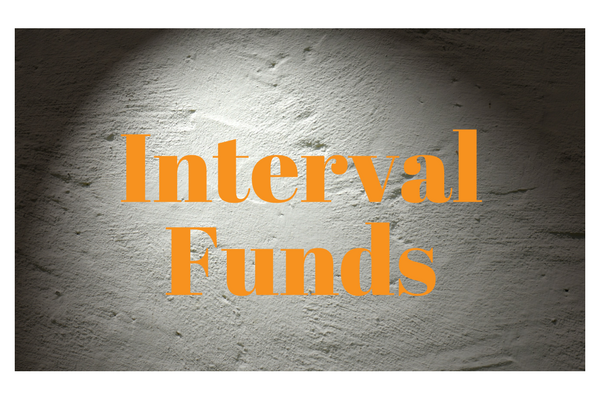More on Interval Funds
January 15, 2018 | Beth Glavosek | Blue Vault

In recent weeks, we looked at the characteristics of closed-end interval funds. Like mutual funds, interval funds offer shares continuously that are priced daily based on net asset value (NAV). While open-end mutual funds can be redeemed daily, interval funds only offer redemptions, as the name implies, at specific intervals such as quarterly or monthly.
Interval funds also share characteristics with closed-end funds (CEF), such as unlimited allocations to illiquid assets, daily pricing (CEF are traded on exchanges), and unrestricted access to both private and public investments.
Here are some other things to know about interval funds.
What can they invest in?
Like mutual funds, interval funds can serve as a “basket” for holding a variety of assets, including:
- Insurance and credit holdings
- Listed common and preferred stocks
- Covered calls
- Institutional private equity real estate
- Nontraded REITs, BDCs, and energy companies
- Residential mortgages
What are their expenses like?
Expense ratios are generally lower than 2%. However, like mutual funds, they charge a management fee, shareholder servicing fees, and other administrative/O&O expenses. Redemption fees are generally zero, and shares may or may not be sold without a sales load.
What are their redemption policies?
Interval funds regularly notify shareholders of opportunities to sell their shares back to the sponsor. These opportunities are offered at specified intervals and dates. Shareholders are notified about repurchase offers generally 30 days (legally, sponsors can provide 21-42 days’ notice) prior to the repurchase request deadline in order to give them ample opportunity to consider if they want to sell their shares back to the sponsor.
Each fund has a cap on how many shares can be repurchased during each interval. Depending on the volume of requests, each request will be handled pro-rata in a democratic fashion.
Our thanks to Bluerock for contributing material to this article.
![]()
Learn more about Bluerock Real Estate on the Blue Vault Sponsor Focus page.

Bluerock Residential Growth REIT Beats FFO Estimates










